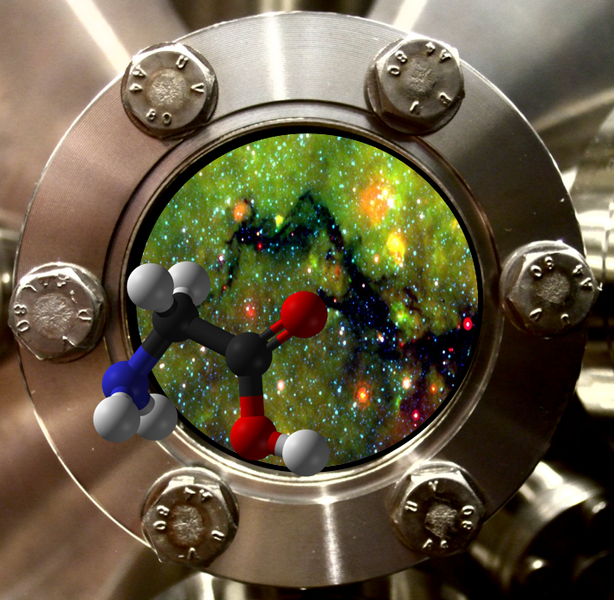Researchers from InterCat: Simple amino acid is produced by dark chemistry in space
The simplest amino acid, glycine, is produced by so-called dark chemistry in space. This goes against the previous idea that glycine formation occurs through energetic radiation. The experiments were done by a team of researchers from the Center of Excellence InterCat at Aarhus University and Leiden Observatory. The results are published in the scientific journal Nature Astronomy.

The amino acid glycine is the simplest amino acid, as well as an important building block of life. Until recently, it was thought that glycine was formed through energetic radiation, but the new experiments show that glycine is produced by dark chemistry in space. Dark chemistry is the term for chemistry that doesn’t need energetic radiation. The experiments were done by a team of researchers from the Center of Excellence InterCat at Aarhus University and Leiden Observatory.
“The important conclusion from this work is that molecules that are considered building blocks of life already form at a stage that is well before the start of star and planet formation,” said Harold Linnartz from Leiden Observatory, the Dutch partner of the Center of Excellence InterCat.
The next step
The experiments were performed under controlled laboratory conditions. These experiments led researchers to conclude that a non-energetic surface formation path for glycine is possible under low temperatures. This differs from previous work where UV radiation was required to produce this molecule.
The next step for the researches is to look at the catalytic role interstellar dust particles play in the formation of complex organic molecules (COM):
“What is the effect on COM formation when an ice contains nanometer sized grains and how can we understand the chemical processes at play,” said Professor and Head of Center Liv Hornekær from InterCat.
